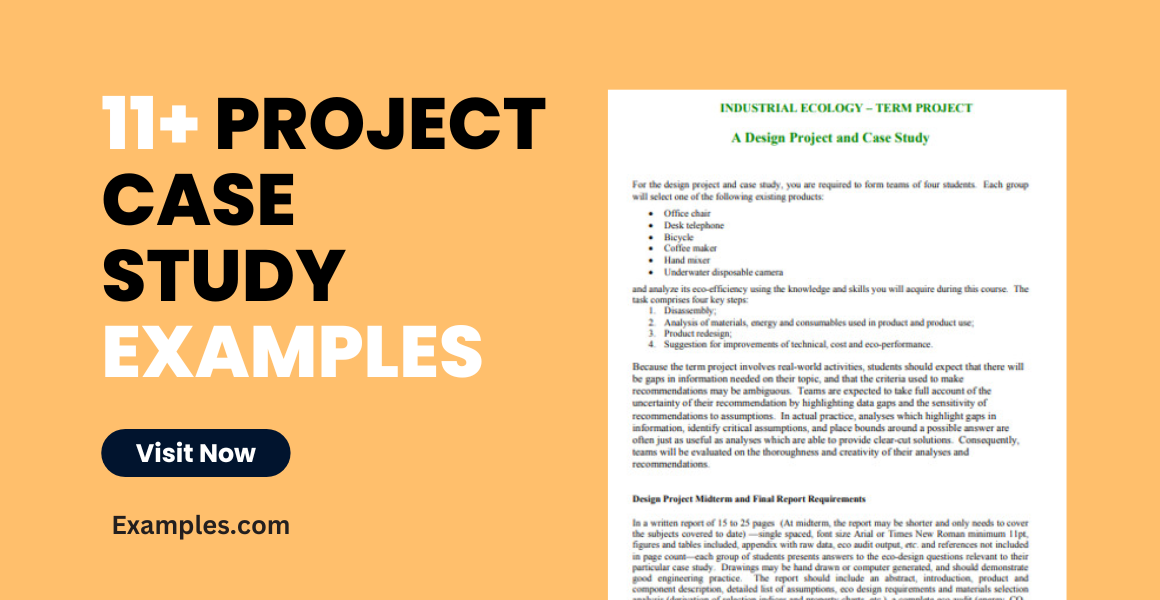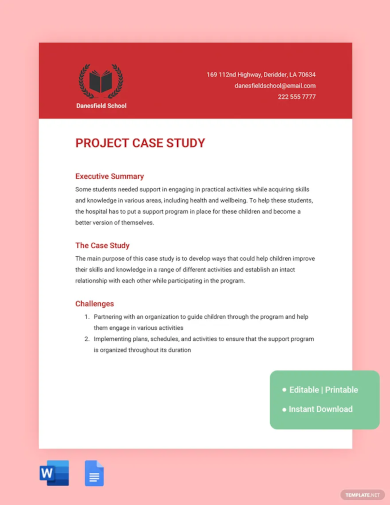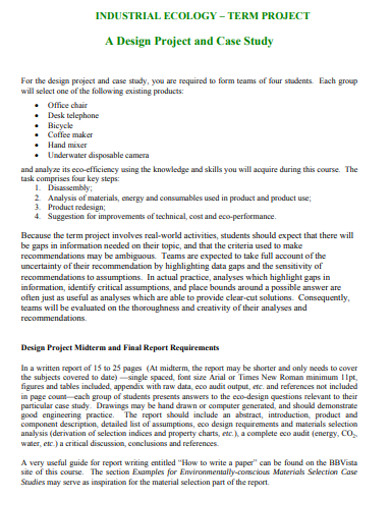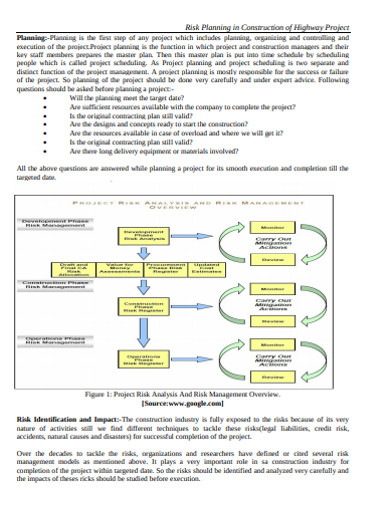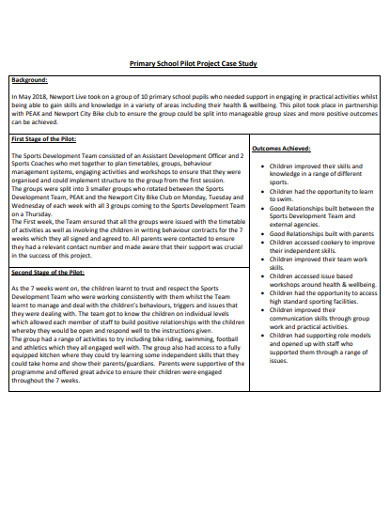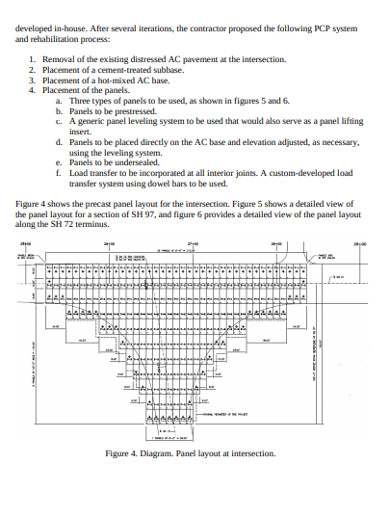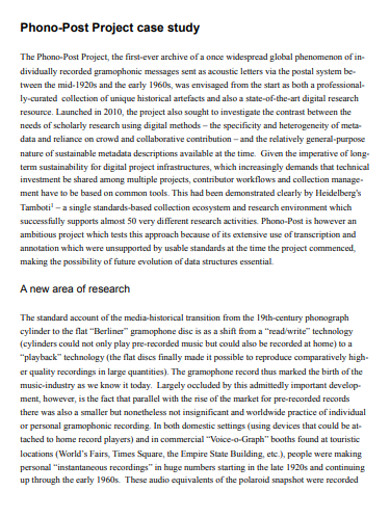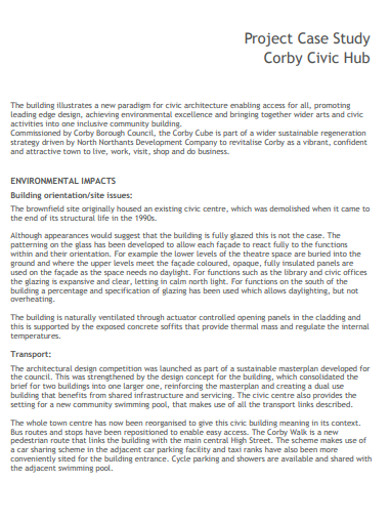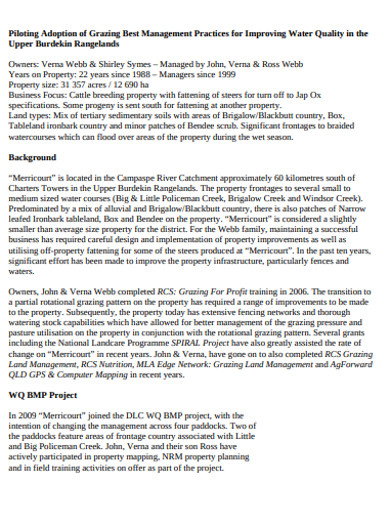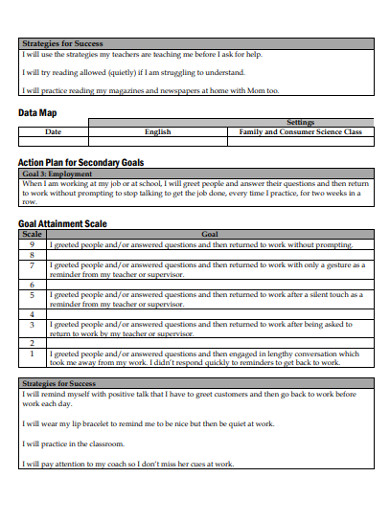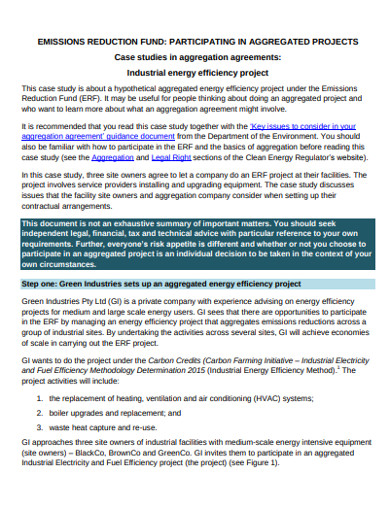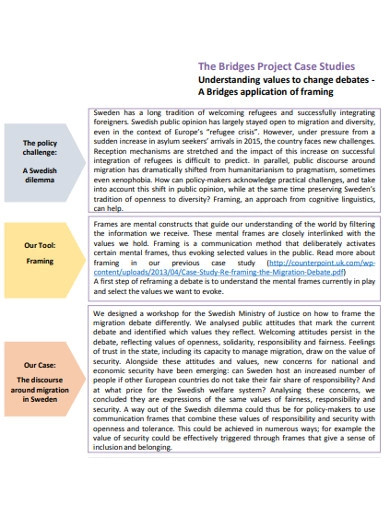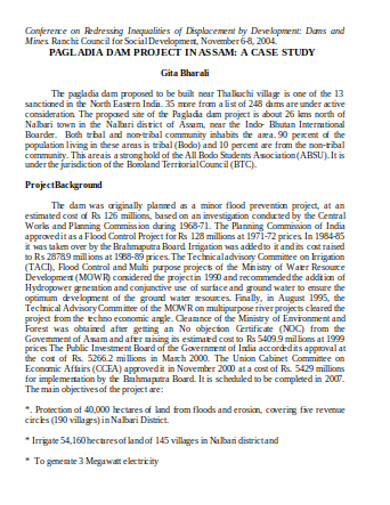11+ Project Case Study Examples to Download
Who wouldn’t want to bask in the glory of success and sit at the top of one’s chosen trade? We can put too much emphasis on the results that we tend to neglect the arduous process that comes with the glitz and glitters. Overnight success will not stand the rigors of long term subsistence. Stories of toils and triumph against adversity are what make our achievement motivating and noteworthy to the rest of the industry. That is why a project case study showing how you overcame ordeals from day zero tells more than the product will of your competency in your chosen field.
Case studies provide in-depth treatment of a subject matter because of the extensive reporting and comprehensive writing style they entail. They put the spotlight on how a team made a project a success despite the challenges and how it is making strides in the industry. Project case studies are a useful project management apparatus for documenting initiatives, programs, and strategy for future reference of the company and concerned entities. Instead of using hard-sell strategies on marketing your craft, let project case studies make the case for you.
End Game Goggles
We don’t just tune in to the recognition of the Olympic gold medalists, Nobel Prize winners, and Pulitzer Prize awardees for their crowning moments. We listen to their backstories, their journey of getting to where they are now. It could be that we find comfort in knowing that the prominent personalities in different world arenas are also humans, that they, too, face adversities. We may be seeking motivation in our own lives in knowing that others made it to greatness so we can, also. Success stories sell for many reasons, but not all generate the same effect in us.
“Powerball” Success
The problem with instant success is that it skips the phenomenon of delayed gratification. When it bypasses the hard work that is equivalent to working for an equivalent prize, people tend to put less value on the amount. In other words, money is worth less when earned with a lottery ticket. This isn’t meant to poke fun on lottery winners nor devaluate what they have done to win. The point is that, in general, it is easier to spend money when you didn’t shed blood and tears to earn every penny.
On Reporting the Process
Although the end product is the biggest tell-tale of the success of a project, it doesn’t paint a complete picture. There is a chasm between the start to finish of a project. When you keep the two detached from each other, you lose valuable information that you can use for future ventures. You also keep up this erroneous image that success comes easy. One, that misleads an audience that you might not even know you have. Forget about inspiring a new batch of leaders, world changers, and entrepreneurs. Two, it is difficult to sustain a pristine and perfect image. It will always crumble sooner than convenient.
Where Pragmatism Fails
On the other hand, veiling the work that came with your success is counterintuitive in making your mark in the field. Achievement is not handed out on a silver platter. Case studies show the rest of the industry how you accomplished a project. It shows your capability in marketing project strategy and management. It tells of your expertise and your work ethic in handling the tasks and meeting strict deadlines. It boasts of your prowess in getting the job done. For a company, project case studies tell the clients how professional you are in meeting their expectations and demands. It tells of your command of the trade and skill in the craft.
It’s time to take off the end game goggles and gain a new perspective on how you should measure success.
10+ Project Case Study Examples
The success of an endeavor takes a stroke of brilliance, perseverance, and hard work. Illustrate for your and the rest of the world’s benefit how you made a project successful against the odds through publishing case studies. Because each study is a detailed accomplishment and performance report on how you went above and beyond what’s good enough for clients, your portfolio and business library will certainly benefit from these documents. With the world becoming aware of the usefulness of case studies, be at the top of your game and tell your success story differently. Look into the following case study templates and samples from different fields and improve your storytelling.
1. Project Case Study Template Example
2. Design Project and Case Study Example
3. Construction of Highway Project case Study Example
4. Primary School Pilot Project Case Study Example
5. Funded Project Case Study Example
6. Phono-Post Project case study Example
7. Formal Project Case Study Example
8. Water Quality Project Case Study Example
9. Educational Project Case Study Example
10. Project Agreement Case Study Example
11. Bridges Project Case Studies Example
12. Project Case Study in DOC
How To Make A Project Case Study
Success stories are not made equal. Revamp your or your business’s portfolio with project management case study that shows why you are trustworthy and reliable in a competitive industry. Keeping case studies in your library will also guide your next decisions. This is how you design your success story that converts audience into clients.
1. Identify a Highlight
Of the projects that you have worked on, which ones would you consider your best? List your top contenders and indicate a summary why you think it so. Perhaps you can ask a colleague to help you identify which of these are your best. Make each study caption concise, detailed, and interesting.
2. Tell it Effectively
Make the format easier to understand on the first reading. Include the description of the client and their problem, the project’s objectives, how you came about the case, and the results. Indicate the challenges and your solutions, and how the project was received by the clients. You should explain how you made the project a success. Remember, even if it was successful, there is a lot going in the background that will put off any interested client, may that be internal team tension or terrible work ethic.
3. Credit All Involved
Most likely, you worked with a team for the project. Therefore, you have to give them credit for what they have accomplished. You should also explain your role in the project and how you contributed to its success. When your client knows how you are involved instead of just your work title in the project, it will help you gain their trust.
4. Describe Project’s Impact
Although case studies are about the process of success, don’t forget to make it clear how the project wasn’t just a money-making scheme. It helps your image if you communicate that you also care for your clients. Write about how the project made or will make a significant difference in the community. Describe how it affected the people involved and its benefactors. Show your heart by including societal and environmental responsibility in your business ventures.
How the work is done is part of the success and should be given a huge chunk of the performance indicator pie. The glorious end of any successful endeavor is only half the picture. Build a respectable career on stable and dependable work that gives importance to the laborious grind as it does the trophy at the end.


